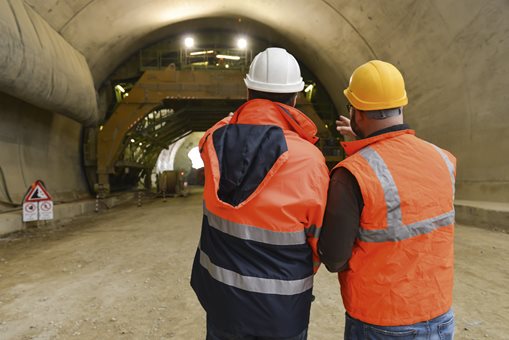Tunnel infrastructure plays a crucial role in modern transportation systems, enabling efficient movement through mountains, under cities, and across waterways. However, tunnels also present unique safety challenges, particularly in the event of a fire. With limited ventilation, confined spaces, and high traffic volumes, fires in tunnels can escalate rapidly, endangering lives and damaging critical systems. That’s where fire-rated enclosures come in. These specialized enclosures are designed to protect electrical and communication systems from extreme heat and flames, ensuring that essential operations continue during emergencies and that recovery is possible afterward. Learn more about fire-rated enclosures, design compliant and certification requirements.
1. Protecting Critical Systems During Fire Events
Tunnels house a wide range of electrical and control systems, from lighting and ventilation to emergency communication and traffic monitoring. In the event of a fire, these systems must remain operational for as long as possible to support evacuation, firefighting, and emergency response.
Fire-rated enclosures are built to withstand high temperatures for extended periods, shielding sensitive components from heat and flame. This protection ensures that:
- Emergency lighting remains functional
- Communication systems stay online
- Ventilation controls continue to operate
- Fire detection and suppression systems remain active
Without fire-rated protection, these systems could fail prematurely, increasing the risk to human life and complicating rescue efforts.
2. Enhancing Safety for Tunnel Users and Emergency Responders
In a tunnel fire, every second counts. Fire-rated enclosures help buy time, not just for the systems they protect, but for the people relying on those systems. By maintaining the integrity of emergency infrastructure, these enclosures support safe evacuation and allow responders to coordinate and act effectively.
For example, fire-rated enclosures can protect:
- PA systems used to guide evacuees
- CCTV systems that help monitor conditions
- Signage and control panels that direct traffic and emergency services
This layer of protection is especially important in long tunnels or those with high traffic volumes, where evacuation and response times are critical.
3. Meeting Regulatory and Compliance Requirements
Tunnel infrastructure is subject to stringent safety regulations, particularly regarding fire protection. Standards such as AS/NZS 3000 outlines the requirements for fire resistance in electrical installations within tunnels.
Fire-rated enclosures help infrastructure owners and operators meet these standards by:
- Providing certified fire resistance ratings (e.g., 60, 90, or 120 minutes)
- Ensuring compliance with local and international fire codes
- Supporting documentation and testing for regulatory audits
Using certified fire-rated enclosures is not just a best practice, it’s often a legal requirement for tunnel projects.
4. Minimizing Downtime and Infrastructure Damage
Fires in tunnels can cause extensive damage, leading to costly repairs and prolonged service disruptions. Fire-rated enclosures help mitigate these risks by preserving the integrity of electrical and control systems, even in high-temperature environments.
By containing and isolating heat, these enclosures:
- Reduce the spread of fire to adjacent systems
- Protect cables, connectors, and devices from thermal degradation
- Enable faster recovery and system restoration after an incident
This resilience translates into lower repair costs, shorter downtimes, and improved reliability for tunnel operators.
5. Supporting Long-Term Infrastructure Planning
Modern tunnel projects are designed for decades of use. Fire-rated enclosures contribute to long-term infrastructure planning by offering durable, tested protection that aligns with lifecycle safety goals.
They are often constructed from materials like:
- Stainless steel for corrosion resistance
- Intumescent coatings that expand under heat
- Thermal insulation layers to block radiant heat
These features ensure that enclosures remain effective over time, even in harsh tunnel environments with moisture, vibration, and temperature fluctuations. Learn more about the material selection for enclosures.
Fire-rated enclosures are not just optional upgrades, they are essential components of safe, compliant, and resilient tunnel infrastructure. By protecting critical systems during fire events, supporting emergency response, and ensuring regulatory compliance, these enclosures play a vital role in safeguarding lives and maintaining operational integrity.
As tunnel networks expand and evolve, investing in high-quality fire-rated enclosures is a smart move for infrastructure owners, engineers, and safety planners alike.
At Transtech, we supply a wide range of fire-rated enclosures, explosion-proof boxes, and components, designed to ensure maximum protection for critical electrical systems in hazardous locations like tunnels. Our high-performance enclosures are designed to comply with international safety regulations, ensuring system integrity, durability and long-term reliability, even under extreme heat and fire emergencies.
Looking for enclosures in hazardous environments?
Contact us today for expert advice and a customised solution that meets your industry’s safety and compliance requirements.







